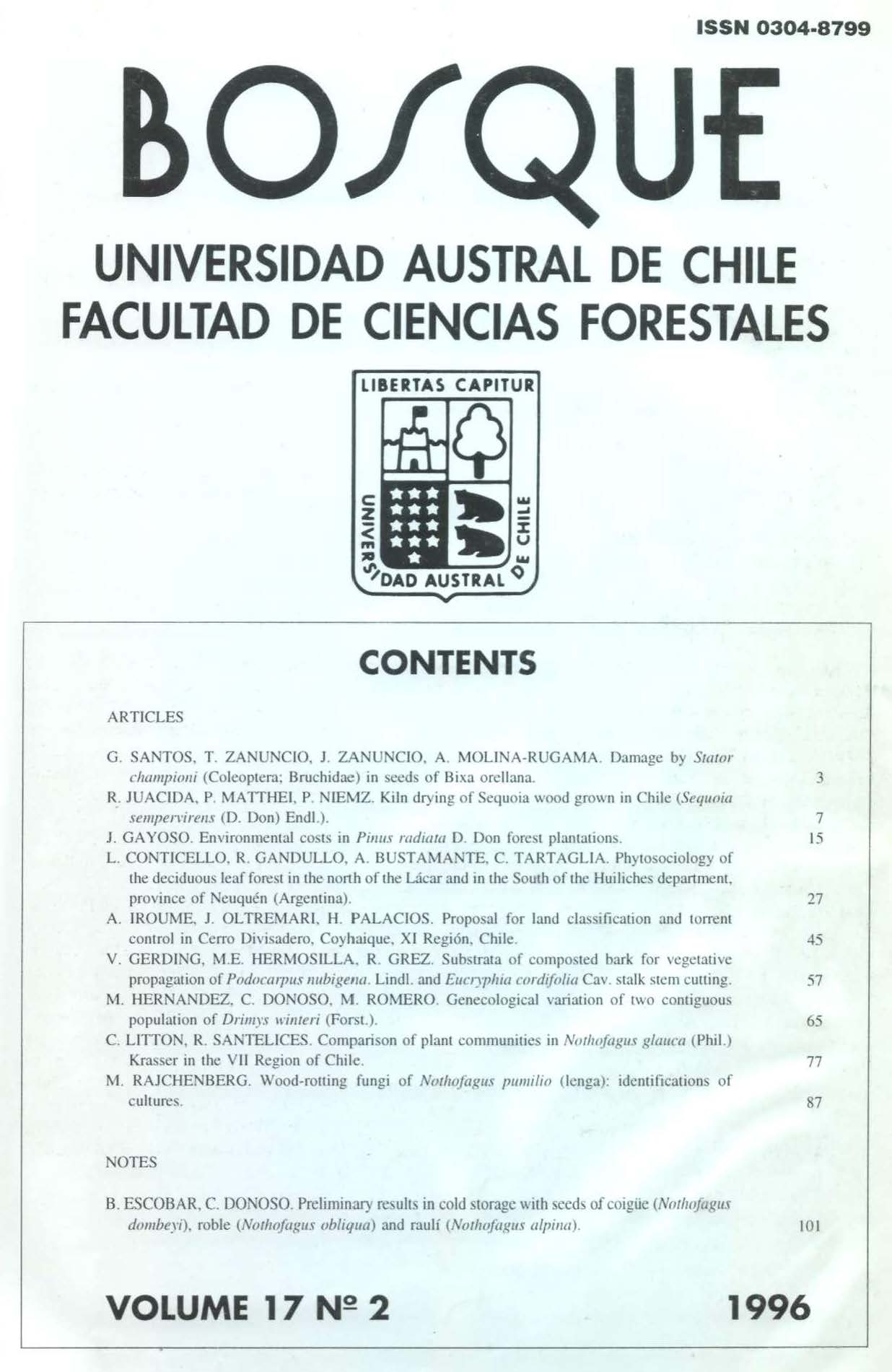Secado artificial de sequoia crecida en Chile (Sequoia sempervirens (D. Don) Endl.)
Contenido principal del artículo
Resumen
Se aplicó un programa de secado artificial propuesto por Rasmussen (1980) a madera aserrada de Sequoia sempervirens (D. Don) Endl. de 25 mm de espesor crecida en Chile. Se evaluó la efectividad del programa en función del contenido de humedad final y la cantidad y magnitud de defectos producidos durante el proceso, tales como alabeos y grietas. Se determinó además la variación dimensional.
La madera utilizada para los ensayos se obtuvo de un rodal ubicado en el predio Voipir, provincia de Villarrica, IX Región. Se extrajeron 7 árboles, obteniendo de cada uno una troza de 4 m de longitud. La madera fue aserrada con sierra huincha y dimensionada a escuadrías de 25 mm x 100 mm x 1.1 m en el Instituto de Tecnología de Productos Forestales de la Universidad Austral de Chile. Los ensayos se efectuaron en un secador experimental de la Facultad de Ciencias Forestales.
El programa aplicado en madera de sequoia crecida en Chile produjo madera de buena calidad. La mayor frecuencia de defectos correspondió a arqueadura y encorvadura, seguidos en bajo porcentaje por torcedura y acanaladura. Encorvadura fue el alabeo más descalificador. No hubo presencia de grietas, excepto en los nudos. No se evidenció colapso. El contenido de humedad inicial promedio de la madera fue de 127%, y el final logrado de 10.6%. La temperatura máxima del bulbo seco aplicado fue 65.5°C y la duración del proceso fue de 100 horas (incluidos tiempos de calentamiento, equilibrado y acondicionado).

